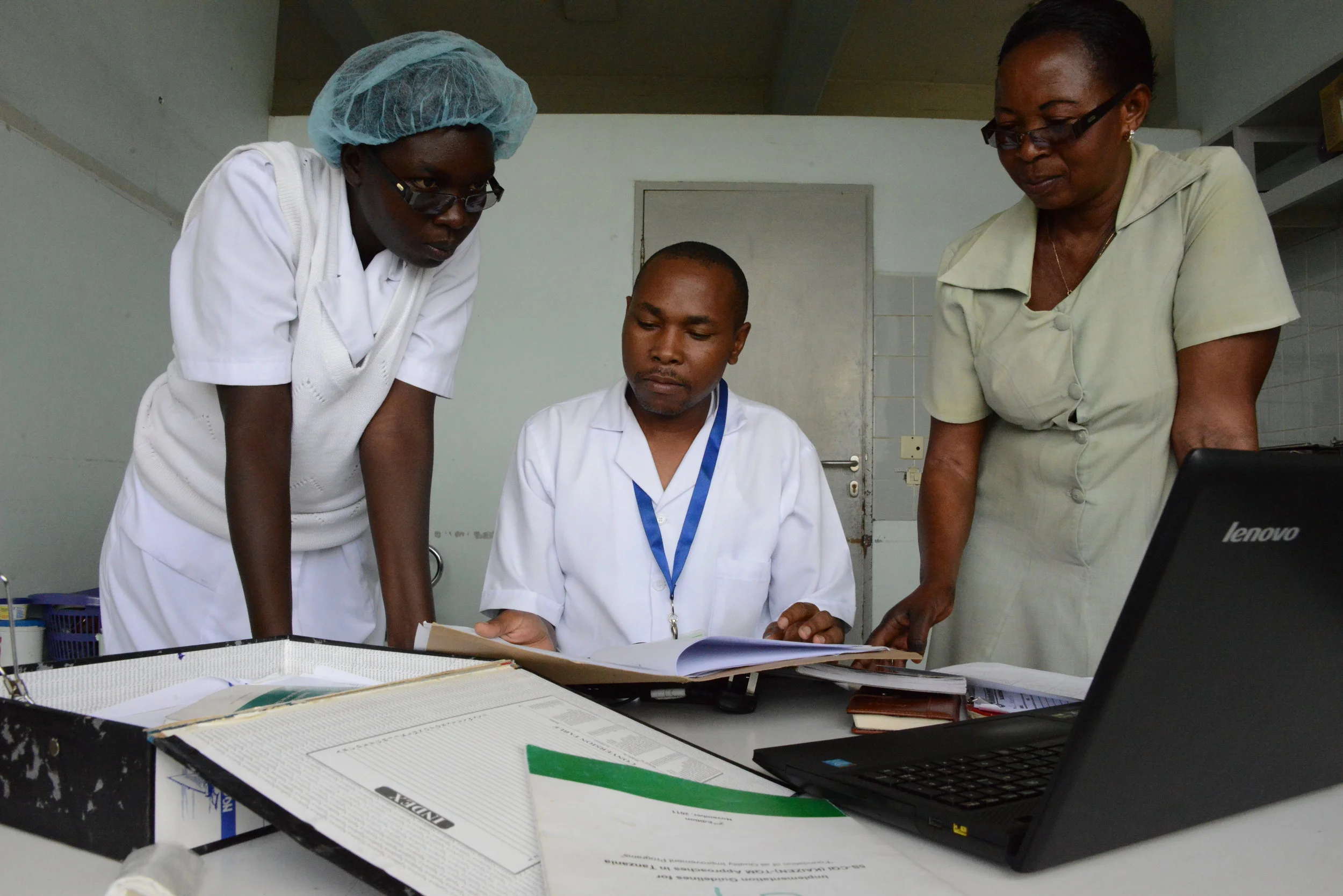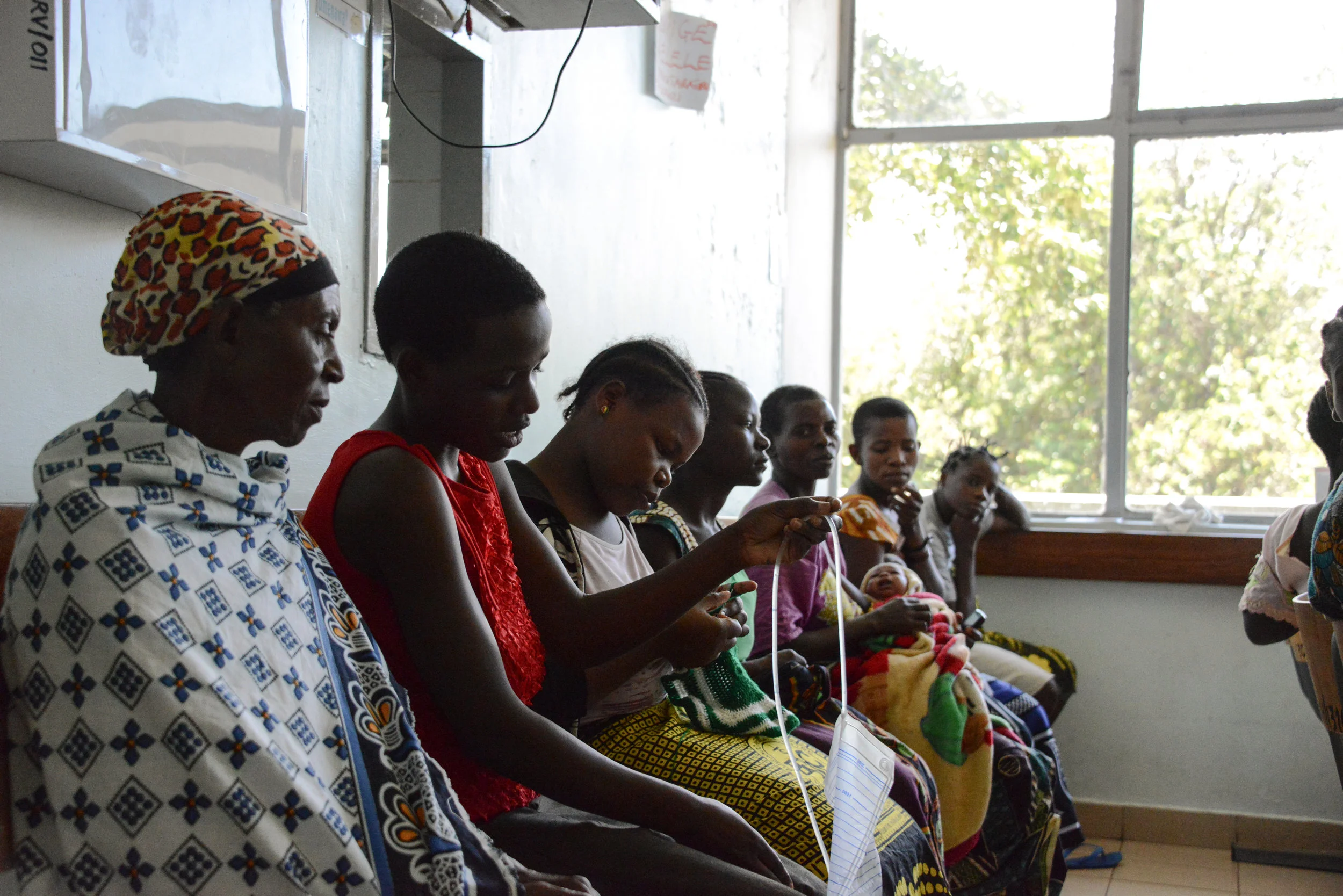MATERNAL MORTALITY IN TANZANIA
FOR WOMEN IN TANZANIA, GIVING BIRTH MEANS RISKING DEATH
Childbirth is a deadly gamble in rural Tanzania where hospitals lack the essential medicines and supplies to ensure mothers and babies survive the delivery room.
“The bleeding never stopped,” labor nurse Fatuma Mwachikunya recalls, reluctantly remembering the most challenging delivery she conducted in her seven years as a nurse. “Have you ever seen a person dying just beside you, helplessly? That is what I faced.”
33-year-old Fatuma's small stature and easy smile belie her fierce determination and intelligence, two essential qualities in this job.
After delivering the stillborn baby, Fatuma did what she could the save the hemorrhaging mother. She administered IV fluids, knowing it would have little effect. What the woman needed was blood. However, the blood bank had run out of the materials necessary to test and produce safe blood, so it didn't have the fresh frozen plasma Fatuma needed to keep the mother alive.
“We could have saved her,” Fatuma says, shaking her head and gazing through the tangle of branches outside the open window. “We had no choice, just to see the mother dying — hopelessly, helplessly.”
An expectant mother stands in the labor ward at Musoma Regional Government Hospital where a team of 20 nurses delivers between 10 to 13 babies every day.
Later that afternoon at the Musoma Regional Government Hospital, in Musoma, Tanzania, Fatuma walks through the open air hallways, hands clasped behind her back. As she enters the labor ward, big bellies covered in bright cloths turn to greet her. The sound of a woman groaning in labor punctuates the quiet conversations between the ward’s patients, women in the early stages of labor or assigned to hospital bedrest.
After years of public health campaigns encouraging women to give birth in health facilities, more Tanzanian women are seeking medical care during labor. With this shift, a new challenge has moved to the forefront: How to ensure these health facilities have the staff and supplies they need to deliver on the promise of safe childbirth.
“Currently, our hospital is in a crisis. I cannot say we have nothing — but I can say we do not have almost everything we need,” Fatuma says.
Inadequate government spending means that even at hospitals in Tanzania, essential medicines and necessary supplies like gloves and disinfectant may be unavailable when a woman goes into labor.
Fatuma urges, “Everything what is needed to save human life should be available, anytime, any day, and it should be a continuous process.”
When the government fails to supply hospitals, it passes the burden to patients and their families.
Mark Kumani, Pharmacist at Musoma Hospital, explains that if the hospital is out of stock, patients are expected to purchase supplies and medicines they need from private vendors in town — or go without.
These vital supplies are often prohibitively expensive for the poor rural residents who visit the hospital.
Beyond the financial burden, is the added risk of delayed treatment. In the small town of Musoma, which is a few hours drive from the edge of Serengeti National Park, shops are not open 24 hours a day. Women giving birth outside of business hours are out of luck if they have urgent supply needs that the hospital cannot meet.
Fatuma (right) examines a patient at the Musoma Hospital Labor Ward.
A country’s maternal mortality ratio, calculated from the number of maternal deaths per 100,000 live births, is a crucial indicator of the risks of childbearing.
The most recent data on maternal mortality ratios was published in the November 2015 “Trends in Maternal Mortality Report” by the WHO, UNICEF, UNFPA, World Bank Group, and the United Nations Population Division.
The report paints a complex picture of Tanzania’s maternal health.
Of the 183 countries evaluated in the study, Tanzania has the 27th highest maternal mortality ratio — a dismal statistic. However, viewed regionally, the numbers show signs for hope.
Tanzania’s ratio of 398 maternal deaths per 100,000 live births, while hopelessly far from the United States’ ratio of 14, is notably below the average of 546 for Sub-Saharan Africa.
As one of the best countries in the world’s worst region for maternal mortality, Tanzania offers signs of hope and may eventually be able to set a path for neighboring nations to follow.
Health workers review records at Bugando Medical Centre in Mwanza, Tanzania.
Dr. Anthony Missinde, obstetrician and gynecologist at Bugando Medical Centre sits at his desk in the massive concrete hospital in Mwanza, Tanzania as he describes the "three delays" that endanger maternal health in the country.
First is the late decision to go to the hospital, a matter of educating families. Next is the difficulty getting to the hospital, a transportation and infrastructure challenge. Third is delayed treatment once a woman finally arrives at the hospital because supplies are out of stock or staff is lacking.
He explains, “It is not just enough to have hospitals, but also we have to equip them.”
International organizations have stepped in to bridge the budget gaps and enable hospitals and health workers to improve care for their patients, ensuring laboring women who made the journey to the hospital have not done so in vain.
In 2012, Americares, a Stamford, Connecticut based nonprofit, began piloting a program to provide supplies and staff training at Bugando Medical Centre, to offset costs and raise the quality of healthcare.
Following its success, Americares expanded the program to three smaller, more remote facilities, including Musoma Hospital.
“The government has not been able to provide the necessary support, the necessary resources…Infection prevention and control is there, but it is theoretical, it is not functioning.” Americares Health Worker Safety Program Manager Steven Tilubuza explains.
“Health facilities will remain safe for both the health workers and their patients, not breeding grounds for infection,” he says, as a result of Americares work.
Health workers at Musoma Hospital listen at an Americares funded training session.
Back at the labor ward in Musoma, Fatuma examines a middle-aged woman who is late into her first pregnancy, an anomaly in a country where women often have their first baby as teenagers. It gives Fatuma cause for concern. She will keep the woman in the ward, with a close eye on her.
As she listens intently to the fetal heartbeat, with a small plastic cone pressed between her ear and the mother’s bulging belly, her mouth bends in a hesitant smile. So far everything sounds good. Yet, she knows all too well how quickly things can turn, and how important it is to prepare for the challenges.
When her shift ends, Fatuma goes home and trades her pristine white scrubs for a bright patterned turquoise dress, leaving the expectant mothers in the labor ward to be a mother herself.
Her two daughters, asleep under their bed nets in the next room, are her motivation. When they become mothers one day, she hopes things will be easier for them.
MATERNAL HEALTH PATIENT PROFILE
OBSTETRIC FISTULA
When her labor pains began, Suzana went to the hospital. The surgeon she needed did not.
A prenatal visit early in the pregnancy had alerted the 38-year-old mother of five to the fact that this pregnancy would be challenging. With no ultrasound available, and no way to diagnose or treat her, health workers could only send Suzana home with a warning to be sure to give birth in a hospital.
With the wisdom of hindsight, Prisca Ringia, Nurse Manager of obstetrics and gynecology at Bugando Medical Centre, provided a retro-diagnosis, “It was likely a case of gestational diabetes.” A condition that, if treated, could have prevented the tragedy that followed.
Suzana heeded the warning and went to the hospital to deliver. However, without adequately trained staff, there was little the hospital could do for her.
After ten hours of painful labor, an ambulance brought her to a second, larger hospital, where she could get her life-saving C-section.
Suzana survived but damaged.
She lost the new baby and her previous life. The hours of obstructed labor left her with an obstetric fistula.
Obstetric fistula is a debilitating condition that does not exist in the developed world, where ultrasounds and cesarean sections eliminate the risk of prolonged, obstructed labor, which causes tissue death and creates a fistula, or opening, between the vagina and the urinary or fecal tracts, interrupting the normal flow of urine and feces and leaving the woman incontinent.
The result is physically debilitating and socially traumatizing.
Shunned because of her condition, Suzana was unable to return to her previous life. Her husband divorced her, taking custody of the couple’s five children, between the ages of 13 - 2, and remarried another woman.
Thankfully, a surgical procedure can usually repair the damage of an obstetric fistula.
Suzana is now at Bugando Medical Centre awaiting the last of her two fistula repair surgeries. If all goes according to plan, she will soon be able to leave the hospital and return to live with her mother. She hopes to support herself selling vegetables in the marketplace but has vowed never to marry again. As it is unlikely she will win her fight to regain custody of her children, it seems she has left motherhood behind.
Women awaiting fistula repair surgeries at Bugando Medical Centre





